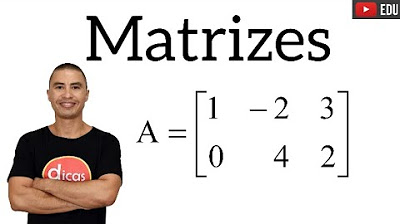Bab 6 Alkena Adisi
Summary
TLDRThis script provides an in-depth exploration of alkene addition reactions, covering key topics such as electrophilic addition, Markovnikov’s rule, and regioselectivity. It details mechanisms like hydration, halogenation, and ozonolysis, explaining the formation of carbocations and the role of stereochemistry in producing specific products. The script also highlights important concepts like the formation of halohydrins, epoxidation, and hydroxylation in alkenes. Additionally, it introduces carbene addition, the role of electron shifts in carbocation stability, and the use of reagents like osmium tetroxide in chemical transformations, making it a comprehensive overview of alkene chemistry.
Takeaways
- 😀 Alkenes undergo addition reactions due to the reactive nature of their Pi bonds, which can form products by reacting with various reagents.
- 😀 Addition reactions can occur on the same face of the Pi bond (syn addition) or on opposite faces (anti addition).
- 😀 Carbocations are key intermediates in many addition reactions, with the simplest example being the methyl carbocation.
- 😀 In the formation of carbocations, the carbon atom is sp2 hybridized and the structure is planar, which makes the reaction prone to attacks from nucleophiles.
- 😀 The reaction mechanism follows Markovnikov's rule, which predicts the regioselectivity of proton addition to asymmetrical alkenes.
- 😀 Markovnikov’s rule states that the hydrogen atom will add to the carbon of the double bond that has the most hydrogen atoms, leading to the formation of the most stable carbocation.
- 😀 The transition state during addition reactions resembles the carbocation intermediate and is influenced by the stability of the carbocation formed.
- 😀 In asymmetrical alkenes, rearrangements of carbocations can occur, leading to the formation of more stable tertiary carbocations from less stable secondary ones.
- 😀 Halogenation of alkenes leads to the formation of dihalides, and the addition can occur in a stereospecific manner, forming products where halogen atoms add to opposite sides of the double bond.
- 😀 Ozonolysis of alkenes involves the cleavage of the carbon-carbon double bond, producing carbonyl compounds as products, with the reaction being carried out at very low temperatures (e.g., -78°C).
Q & A
What is the characteristic feature of the addition reaction in alkenes?
-The characteristic feature of addition reactions in alkenes is the involvement of the Pi bond. The Pi bond in alkenes reacts with electrophilic reagents to form new products.
What is the role of carbocations in addition reactions?
-Carbocations act as intermediates in many addition reactions. They are highly reactive, with a planar structure due to the sp2 hybridization of the carbon atom, which allows nucleophilic attack from either the top or bottom face.
Explain Markovnikov's rule in the context of addition reactions.
-Markovnikov's rule states that when HX is added to an asymmetric alkene, the hydrogen atom will attach to the carbon atom that already has the greater number of hydrogen atoms, resulting in the most stable carbocation intermediate.
What is the significance of regioselectivity in addition reactions?
-Regioselectivity refers to the preference of a reaction to occur at a specific position on the molecule. In the case of addition reactions, it determines which carbon of the alkene will bond with the electrophilic reagent.
How does carbocation stability affect the outcome of addition reactions?
-The stability of the carbocation intermediate significantly influences the reaction outcome. More stable carbocations, such as tertiary ones, form more quickly and dominate the reaction pathway, while less stable carbocations, like primary ones, are less favored.
What is the mechanism of HBr addition to asymmetric alkenes?
-The mechanism begins with the protonation of the alkene, forming a carbocation intermediate. The bromide ion (Br-) then attacks the carbocation, following Markovnikov's rule, where the bromine attaches to the more substituted carbon atom.
How does the addition of water to alkenes result in alcohols?
-The addition of water to alkenes occurs under acidic conditions, forming a carbocation intermediate. The carbocation then reacts with water, leading to the formation of an alcohol after the protonation of the resulting hydroxyl group.
What is the difference between anti and syn addition in alkenes?
-Anti addition occurs when two substituents add to opposite sides of the alkene's double bond, while syn addition occurs when the substituents add to the same side, often resulting in different stereochemistry of the product.
What is the role of peroxides in the addition of halogens to alkenes?
-Peroxides initiate a free radical mechanism that leads to the anti addition of halogens to alkenes. This results in the halogen atoms adding to opposite sides of the double bond.
How does ozonolysis of alkenes work?
-Ozonolysis involves the cleavage of the double bond in an alkene by ozone, forming an unstable ozonide intermediate. This intermediate then undergoes rearrangement to yield carbonyl compounds, such as aldehydes or ketones.
Outlines

此内容仅限付费用户访问。 请升级后访问。
立即升级Mindmap

此内容仅限付费用户访问。 请升级后访问。
立即升级Keywords

此内容仅限付费用户访问。 请升级后访问。
立即升级Highlights

此内容仅限付费用户访问。 请升级后访问。
立即升级Transcripts

此内容仅限付费用户访问。 请升级后访问。
立即升级浏览更多相关视频

Alkene Addition Reactions: Crash Course Organic Chemistry #16

Fractions & Decimals - Chapter 2 - Introduction - Class 7

AQA 3.4 Alkenes REVISION

Addition of water (acid-catalyzed) mechanism | Organic chemistry | Khan Academy

Reaksi Oksidasi dan Reduksi - Redoks- kimia kelas 10

Aprenda Matriz Rápido I Matrizes
5.0 / 5 (0 votes)
